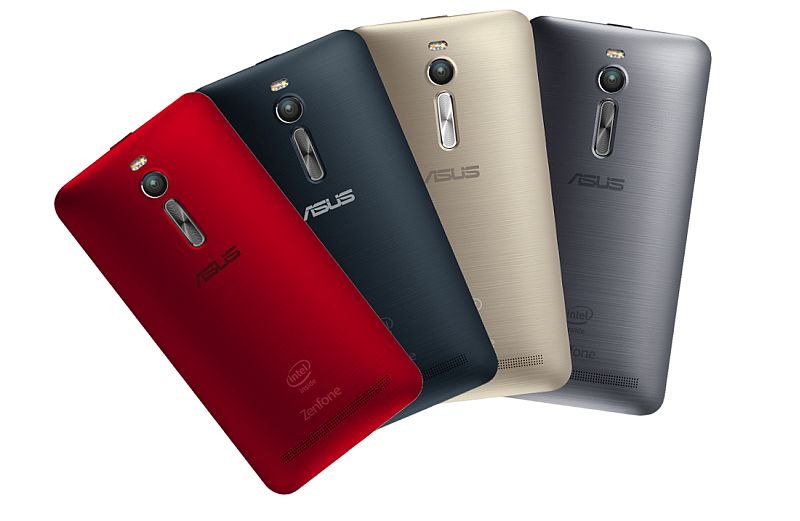
Money seeks reason to grow. To multiply. In its most basic sense, it seeks to be a catalyst of change, of growth. Its power lies in serving a purpose which goes beyond simple multiplication. Artiman, a mid-sized venture capital firm, based out of silicon valley defines just that.
It puts in money in ideas which are defined as ‘white space’. Radical, unknown, stretching belief and imagination, working in basic science and technology though rooted in deep science, economics, humanities. It is a firm which will go where no man or really few dare to go.
Of the thirty companies in its portfolio, nine are in healthcare and seven call India home. Bangalore based OncoStem, founded by Dr Manjiri Bakre makes a molecular test that predicts cancer recurrence; Cellworks with 200 scientists -PhD in Cell biology works in bioinformatics.
Tonbo – founded by Arvind Laxmikumar, builds special-purpose cameras with night vision and artificial intelligence built into it, the market being intelligence services, governments and security companies.
CORE Diagnostics is a specialist diagnostics with rare high-end tests in Cancer and MedEcube is a healthcare Concierge service which moves patients from different parts of the world to any destination that a patient requires.
“Third of our dollars go into healthcare.” Says Dr Ajit Singh, managing partner. In addition, Singh sits on the Boards of Max Healthcare and Cadila Pharmaceuticals and also on the board of Trustees of American Association of Cancer Research (AACR), the world’s oldest and largest professional association in cancer research.
A position which gives him crucial insights which he brings to the Tata Trusts Cancer Care initiative in his altruistic advisory capacity. He is also an Adjunct Professor in the School of Medicine at Stanford University.
The value proposition
All of the seven partners based out of silicon valley come with entrepreneurial experience of having built 3-6 companies each during their professional lives.
As a matter of interest and focus, they are looking at the confluence of – Biology, Economics, Technology and Arts. Getting Artiman as an investor gives Indian companies quick access to the Silicon Valley network – the market, clients, the huge opportunity.
A second and very important reason that often gets overlooked is the profile of the partners who have all been serial entrepreneurs. The team packs inexperience, guides its portfolio companies through months of frustration and lost time besides bringing hands-on experience.
Money, expertise, access to a huge network and most importantly customers all in one place. “We roll up our sleeves and work with the company besides just putting money.” Says Singh.
Having exits ranging around 4x, It usually enters in series A with 40-50% stake, mostly the first institutional capital in the company which means. Investment at seed t stage ranges from half a million to a million, Series A, it can be anywhere between $3-8 million.
However, $20-25 million is reserved for future rounds. “These larger size investments, at first glance, are contraindicative to early stage. Usually, early-stage investors put in small money but put it in a lot of them. We work differently, we put a small amount of money upfront but we reserve a lot of it for future rounds.
The reason is that we take heavy bets on science and technology which means the gestation period is longer many times up to 10 years, hence you need money for the long haul. We invest up to 10% of our capital per company.” Adds Singh.
Exit happens when the ‘final’ exit happens. In India, investors may choose to exit in favour of a new investor. “We have never done it. We almost always in follow-on rounds of financing, and help build out the company until a public offering or a trade sale. ” says Singh. With 1.2 billion dollars worth of assets globally.
Betting on the man
Often said but many times not quite followed with the same precision is betting on the entrepreneur, not just the idea. Of course, you have the right to fall in love with your idea.
How else will you be passionate? But when you see something is not working, can must course correct and move on. This comes from intellectual honesty. This is especially true in healthcare. An idea can be worked on for 7-12 years.
During that time, there will be wrong starts, possibly even an opportunity to take it to a different direction. If the entrepreneur, the leader of the idea has the ability to accept reality, change direction or even perhaps to solve a related problem, it makes for a rare combination.
“When I see that in an entrepreneur, I will invest. Other things, like taking the idea forward, creating a team around them is easier to do. Not easy, but easier. ” says Singh.
The typical deal flow for a VC is that an entrepreneur comes to pitch to you – walks in, referrals from other early or late-stage VCs, legal advisors etc. Ten years ago, the company decided to go seek out entrepreneurs and created three programs.
The first program focusses on our University relationships.
All of the partners, systematically go to university campuses throughout the year. These visits are extensive, a week of meeting professors and students, understanding what they are working on and try and gauge if there is practical and commercial value in the ideas and if there is, begin licensing of technologies and figure out if the student or the professors who have invented something also has an entrepreneurial DNA. If not, they try to match them with someone who does.
Then comes the second program, the Entrepreneur in Residence (EIR). If the inventor does not have entrepreneurial DNA, Artiman proactively seeks to create a supply of entrepreneurs who can match with them.
“When we find such people, we often bring them in as EIR, have them cohabitate with us, we give them office, access to our data, our network of experts – to help think through ideas. They are not part of the fund, per se but they are EIRs. Either we throw an idea at them or we pair them with an inventor who is a scientist, technologist but needs to pair with an entrepreneur. Then we put in the money. ” adds Singh.
In some instance though, there are people who have both the science and the instinct of an entrepreneur in them. This doesn’t happen frequently, but it does happen. That company needs investments and setting of milestones.
The third program, BETA – stands for Biology, Economics, Technology and Arts. Artiman seeks entrepreneurs not just from sciences and engineering but from diverse disciplines. The driving principle being that truly groundbreaking innovation is almost always transdisciplinary.
The artist will bring design-thinking, the economist will bring the macro issues and the other two are obvious. “Hence our deal flow also stems from generating these ideas, very often with the people we meet. ” says Singh.
Every business has competition, it is true for Venture Capital as well, dollar too is competing to get the best combination of a business head and a viable idea. In the spirit of seeking out entrepreneurs, Artiman stands to go looking for them first, like it was in the 1960s, back to the basics.
“Our company, Invensense, that makes motion sensors for mobile phones is one such example. It is a market leader in the area. We have held on to the companies, which have gone through many iterations. Some succeeded, and some of them we had to shut down. ” shares Singh.
This is the true form of venture capital – the way it was in the 1970s, go out on a limb and try something crazily new. In this business, success is counted differently. If you can turn 10% of your businesses into Unicorns, 20% turn out fairly good, 20% average and 50% are a complete bust, it is a great run. Artiman claims it is not in for a two-three year flip rather it is for a decade long run, often with very high risks, potentially very high rewards.
The business of Diagnostics.
Globally, diagnostics constitute 3% of the expense of healthcare, yet it controls 75% of the expense of healthcare downstream, so what is spent after diagnosis, the surgery, the medicine, the aftercare, the follow up, is all dependent on the accuracy of diagnostics.
Imagine a 25X advantage is based on 3% of expense and 100 % of the clinical outcome. So diagnostics is an area which needs investment, it needs the attention, it needs the awareness that it is a critical area.
Diagnostics plays a supercritical role in ensuring wellness, good health, good treatment, cure and follow up. Five years ago, routine testing did well, companies with economies of scale were doing well.
Nobody really focused on speciality-diagnostics, there was nobody focusing on high-end labs. CORE Diagnostics was amongst the first one in the space of molecular diagnostics. It is focused on Oncology: expertise of people is the most in Oncology, 80% of its revenue comes from Oncology.
However, it has now started Nephrology and 7% of the volume is in Nephrology. What took us 6 years in Oncology has taken three months and it is the brand reputation at work.
Similarly, Bangalore OncoSTEM has developed its own tests. Currently, it is working on diagnosing kit for ‘recurrence of cancer’ and possible markers for targeted treatment to prevent it.
Another bet is on Click Diagnostics. A company developing a simple kit for diagnosing infectious diseases. As of now, diagnosis of infectious diseases is being done in exactly the same way as it was being done after world war I, through a blood culture.
It takes 24-72 hours, mostly the physician is flying blind if he has to begin treatment while waiting for the result. This is not always good for the patient, leading to overuse of antibiotics, exacerbating the problem of antibiotic resistance. The ideal situation would be that the test result is available immediately.
Dr Adam de la Zerda, a rare scientist entrepreneur who came as an EIR into Artiman has built Click Diagnostics. An electrical engineer from Israel, with a Master’s degree from Stanford in biomedical engineering and PhD from Stanford in molecular diagnostics, he did his post-doc in chemistry from Berkeley and then joined as a Professor in structural biology.
Singh put in a problem statement in infectious disease diagnostics to him. The challenge was to come up with a diagnostic tool which will allow the diagnosis of any infection, in less than ten minutes, for less than 10 dollars, managed by a person with minimal training.
De la Zerda took up the challenge and after 18 months of work now has a product undergoing clinical trials for FDA approval. He has a working technology with immense applications on healthcare, particularly in developing countries. The portable, single-use device, no bigger than the mobile, it will diagnose any infection at home, in the doctor’s office or at a pharmacy, in less than 10 minutes.
Depending on the infection, it analysis all types of samples and bodily fluids – saliva, sputum, urine, swab or stool.
Currently, the company is in stealth mode.
The thrill of white space investments
White space is just that, untouched territory. It occupies the space wherever there is a gap in the market or a gap in the utilisation of the technology. White space investments help build companies that disrupt the status quo.
A great example is the construction industry. In an eight trillion dollar industry worldwide second only to the military, covering roads, airports, homes, shelters, prefabricated structures. The industry has had no innovation.
Aditazz, another of Artiman’s portfolio companies is a disruptor. Deepak Aatresh, the entrepreneur behind the company does not come from construction, he designed microchips for computers.
His epiphany was if he took a microprocessor chip and magnified it 9 or 10 orders of magnitude, it looks like a building, so he applied techniques from chip design to building design. His second epiphany was to question building structures in the old way. To bring in efficiency and precision, he sought inspiration from shipbuilding.
While a ship, half a million sq. feet, 8 stories high has 1000+ rooms and a couple of power plants can be built on water in a year and a half, a hospital in the US takes four to six years. So with a partner from the shipbuilding industry, Aditazz, now in its seventh year is breaking new ground.
It has designed hospitals, energy farms, layout for piping in an oil refinery. Recently, they have implemented the Li Ka Shing hospital in Xhantao in China.
In India as in many parts of the world, the company is at some disadvantage because of extremely low labour cost and slow adoption of technology. Companies are not looking at the advantage of better buildings, speed of construction, lower operating costs.
Ratan Tata has co-invested in the company, as an architect, he understood the potential and the disruption it could create. The technology allows the building to be constructed 30% faster, 30% cheaper and 10% less expensive to run. Right now, for its software and design, 70% of the customers of Aditazz are in the US and 30% are in India and China.
What is exciting about India?
Lots of innovation happens outside of India whose first applicability may be better in India. In the US, a mainstream technology company has to clear three gates: get an idea, get the capital, and build the idea into a product.
Then you can go to customers validation and building out the business. In a healthcare or biotech company, there are two more gates: get regulatory approval, such as from FDA or CLIA, and the fifth gate is to get reimbursement approval from insurance.
Hence, even when you get regulatory approval, it does not mean the product will succeed. So a number of products for which companies receive regulatory approval from the FDA, may not get reimbursement approval from insurance.
These products can be launched in India which is largely a self-pay market after receiving safety, efficacy validation and getting FDA approvals.
Secondly, there is a large amount of data which can be used without compromising patients’ confidentiality with which you can generate clinically relevant innovations.
The sheer volume of such data in India, and its availability is exciting “We believe that we are in the Decade of Data, and much of healthcare innovation – both to improve quality, as well as to improve assess and affordability will come from it.” Says Singh.
The third reason for Artiman’s interest in the work is of large-scale societal impact. Singh has a long-standing relationship with Tata trusts cancer program which started more than two years ago.
While it is funded by a not for profit, and its charter is social impact, the project is being operated with the mindset of a startup or corporate which has to be financially self-sustaining.
Artiman is creating a platform which will have a very large reach, addressing the needs of second and third-tier towns and rural areas. That problem cannot be solved just with skill. It has to find interesting innovative solutions. The Tata Trusts Cancer programme is using technology extensively and Singh is in the midst of it.
Artiman clearly is on a roll.
Population genetics is the study of genetics of a significant number of population from a country. The UK has Genome England, the US has a study, so does China, France and GenomeAsia100K is a study being done in Asia to understand the genetic profile of the population. An Indian company, MedGenome is a partner.
Now, Artiman Ventures a Silicon Valley VC firm with a significant portfolio of companies working in the healthcare diagnostics and therapeutics space in India, OncoStem, CORE Diagnostics, Cellworks is leading a major initiative to sequence the genomes of one million Indians.
With an investment of $20-30 million spread over the next 3 years, the study will look at Oncology, neurodegenerative disorders (Alzheimer’s, Parkinson’s etc.) as well as Metabolic disorders (Diabetes). Tata Trusts Cancer Care Program will also be part of this collaboration.
It is an accepted fact that the Indian disease profile is different, especially for cardiovascular, diabetes, oral cancer, cervical cancer, etc. and unless a large scale genomics study is done, we will not understand what therapeutic interventions will work best for Indians and what preventative measures we can take.
Essentially a single company cannot do such a complex study. That is where Artiman Ventures got in, federating the genomics related efforts of the companies in its portfolio which have been focused on this area, putting in several tens of millions of dollars, to jumpstart the study.
It will need further collaboration across hospitals, 200,000 samples are already available at CORE and the study will begin there, this will take a few years to finish. This initiative is focused on clinical diagnostics and therapeutics as well as biopharma research.
Illumina and Life technologies sequencing technologies will be used for the project. Data will be owned both individually by the entities, as well as by the consortium so formed, but will also be made available for national projects.
In many countries, the government initiates these projects. But the process is slow because of the inherent committee structure for decision making in such initiatives and the understanding of biology, genetics and disease-knowledge is moving really fast.
“If we do not make the data available to the broader community, we will be missing the boat.” Says Dr Ajit Singh, Managing Director. This initiative will create clinical studies which will help accelerate the development of personalised therapies for the patient.
[“source=businesstoday”]













